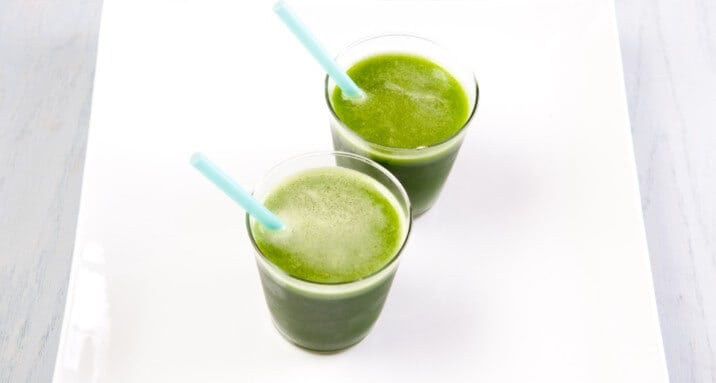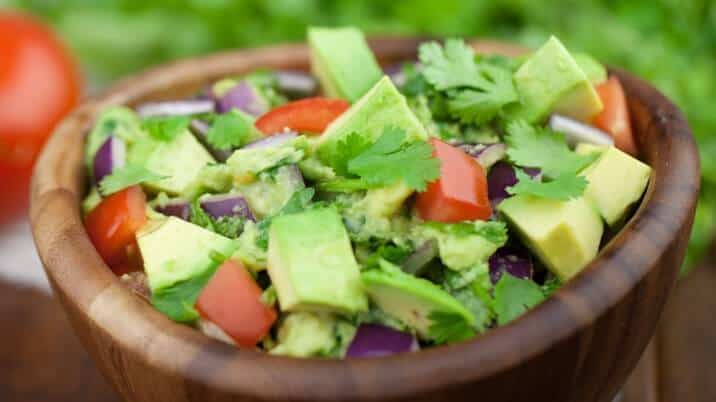Recipes for Cilantro
Cilantro Ginger Smoothie
Start your morning off right with this immune boosting and detoxifying smoothie. Cucumbers, ginger, pineapple, and tomatoes help to fight inflammation, and help the body rid itself of toxins.

Cilantro Salmon Burgers
These delicious and quick salmon burgers get an extra boost of nutrients from cilantro. As mentioned above, while not recommended to cook cilantro, this quick preparation doesn’t affect the taste or nutrients.

Super Cilantro Guacamole
Who doesn’t love guacamole? Avocados are one of the healthiest foods on the planet! They are packed with healthy monounsaturated fats, potassium, magnesium, vitamins A, B, C, E, and K, fiber, and phytonutrients. This recipe is a great way to get the potassium you need to support a healthy heart.

Baked Grouper with Coconut Cilantro Sauce
The coconut cilantro sauce in this recipe provides a rich, seemingly decadent topping to fresh grouper. The coconut oil, cilantro, ginger, and garlic add to the health benefits of this delicious dish.

Lime Cilantro Coleslaw Recipe
This fresh coleslaw recipe comes together quickly, and is brightened with the addition of cilantro. Cabbage, one of the cancer fighting cruciferous vegetables, is packed with fiber, and other nutrients that aid in digestion, aided by the fresh cilantro. Enjoy alongside grilled wild salmon, roasted chicken, or a bison burger.
- 1 head Savoy cabbage
- 4 scallions
- ½ bunch fresh cilantro, chopped
- 1 cup vegenaise
- 1 ½ tablespoons honey
- 6 tablespoons fresh lime juice
- Sea salt & black pepper
- Shave the cabbage into thin ribbons. Cut the scallions lengthwise into long strands, similar to the cabbage.
- Combine the cabbage, scallions, and cilantro in a bowl and toss.
- Mix the vegenaise, honey and lime juice well. Season to taste with sea salt and black pepper. Toss with cabbage mixture, and enjoy.
Cilantro Uses & Storage
While coriander can be added throughout the cooking process, cilantro actually loses its signature strength, and health benefits when introduced to heat. It is best to add fresh chopped cilantro leaves just prior to serving in hot dishes. For raw preparations such as salsas, guacamole, smoothies, and others, cilantro can be added at any point.
How to Store Cilantro
To store fresh cilantro, give it a quick rinse in fresh water, to remove any dirt or grit. Store upright in a jar with an inch or two of water, cover with a plastic bag, and refrigerate. Be sure to remove any wilted or slimy leaves before covering in plastic, and the fresh cilantro should remain beautiful for up to 10 days. Drying of cilantro is not recommended, as the fresh citrusy flavor is diminished.
Preserving Cilantro
To preserve fresh cilantro longer, prepare a cilantro oil. The first step is to quickly blanch a bunch of fresh cilantro by just dipping in boiling water, and then patting dry. Add the cilantro (including the stems!) to a blender, and topping with olive oil or ghee.
Blend until smooth. Pour into ice cube trays and freeze overnight. In the morning, remove from the trays, and store in zip type bags in the freezer for whenever you need a boost of flavor from fresh cilantro.
When you have an upset stomach, or just want the advantages from the proven health benefits of cilantro, pour 1 ½ cups of boiling water over ¼ cup of fresh cilantro leaves, cover with a saucer, and allow to steep for 10 minutes. Strain through cheesecloth, add a touch of raw honey and enjoy.
Grow Your Own
If you want cilantro year round, it is easy to grow in the home. Purchase organic seeds online, and grow in containers that are at least 8-10 inches deep. Cilantro likes bright sun and thrives in east or southeast windows.
When cilantro reaches 6 inches tall, it is time to harvest! While some cilantro is harvested much later, this can add to the bitterness and soapy taste that some people may experience. As cilantro quickly cycles through life, it is recommended to sow seeds every 2-3 weeks to make sure you always have a hearty supply.